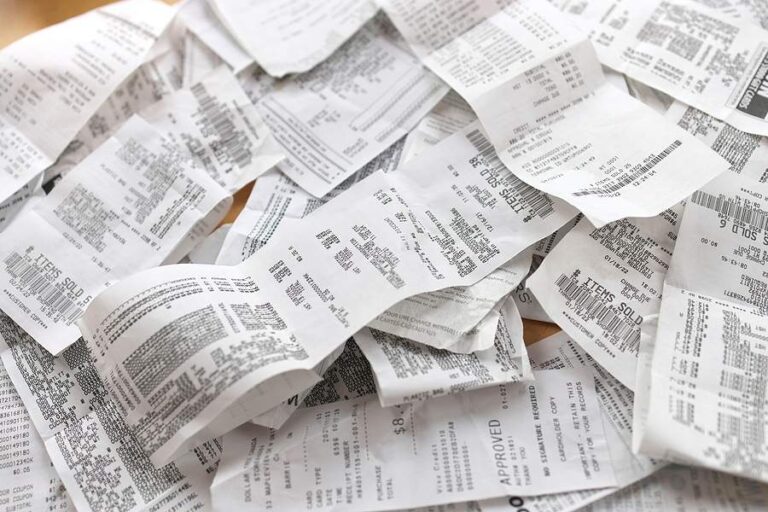
I’ve been streaming a lot of K-dramas lately. The “K” stands for Korean for the uninitiated. One of my recent favorites is a remake of the novel Little Women by Louisa May Alcott. It’s a modern day take on the story about 3 sisters living in poverty who suddenly find themselves deep in an embezzlement conspiracy. It’s juicy stuff. Anyway, one of the sisters is a bookkeeper. One day her mentor asks her “What are the receipt and ledger to a bookkeeper?” She answers, “The bible”.
I thought about it for a moment and was inclined to agree with her. Receipts are like the bible to a bookkeeper in that it can be used to trace the origin of every purchase. They contain all of the details needed to support a transaction and trace every penny spent. Where did that new desk come from? How much did it cost? When was it purchased? Just look at the receipt.
Receipts are not only important to bookkeepers but to business owners too. The IRS requires that most businesses keep tax records and receipts for at least 3 years as supporting documentation to prove to that the deduction you’re claiming on your taxes is legit.
While a receipt can be your friend, in case of an audit, it can also be a nightmare for you or your tax accountant at year-end. Unorganized receipts can mean a long-drawn out tax season. It can also be an added expense if your tax preparer has to spend extra time putting them in order before they can begin doing your taxes.
The Shoebox Method
You know what the “shoebox” method of receipt management is, don’t you? Simply put this means you “organize” your business receipts using the proverbial shoebox. You stick receipts anywhere you find space. Your wallet, purse, desk drawer, kitchen drawer, glove compartment, that pocket of a jacket you haven’t worn in months. Receipts are unorganized and all over the place. Using this method will stress you out come tax time because you’ll spend too much time trying to find them all so you don’t miss out on much needed tax deductions.
Get Rid of The Shoebox
Not only does keeping paper receipts take up a lot of valuable space the ink won’t last forever. How many times have you looked for a receipt only to find it unreadable because the ink had faded? What about opening a storage box to find that insects or Mickey used your receipts for snack time? It’s not a pretty sight.
A Better Way
Save yourself the frustration and throw out the paper. Do these things instead:
Digitize, Digitize, Digitize. There are so many receipt-tracking apps available for businesses of every size. There’s really no reason to keep up with paper. If you or your bookkeeper uses QuickBooks to manage your company’s finances, it has a receipt capture function within its mobile app that imports the receipt directly into your QuickBooks account. It reads the receipt and puts it into the correct account categories. Freshbooks also has this function. You can also use apps like Expensify, ABUKAI or Evernote. There’s even one called Shoeboxed. If you need a free option, sign up for a free individual account with Box. You’ll get up to 10GB of storage, which equals space for more than 50,000 documents.
Save the trees and use your email. Most stores give you the option to have your receipt printed or sent to your email address. Opt for the latter. Create subfolders under your Inbox for each store and put the receipts there. Just remember to make a habit to move the receipts often otherwise they may get lost in the sea of other messages.
Use your phone. If you’re like me, you take your phone almost everywhere. Why not put it to work as a mobile assistant, so to speak. Take a picture of your receipts and save them in a special folder on your phone. You can always download them to your desktop later and save them on your laptop. Or if you have cloud storage, you can save them there.
Photo Album. If you just can’t let go of the paper, buy a photo album to store receipts. The ones with clear plastic pockets are the best. The pockets will keep the ink from fading and you can insert and remove the receipts easily.
File Folders and Envelopes. Another oldie but goodie for the paper lovers. Use manila folders, accordion files or envelopes to organize receipts. If you use envelopes use a separate one for each month, expense type or vendor.
There are many receipt management options out there and one is sure to meet your needs. Just be sure to pick the method you’ll do consistently. With a little planning and self-discipline, you can develop a simple, efficient way to organize all of your receipts and make tax time easier and much more peaceful for you(and your tax accountant).
If you need help getting in control of your business finances as well as your receipts, schedule a call with me. I can help you.
